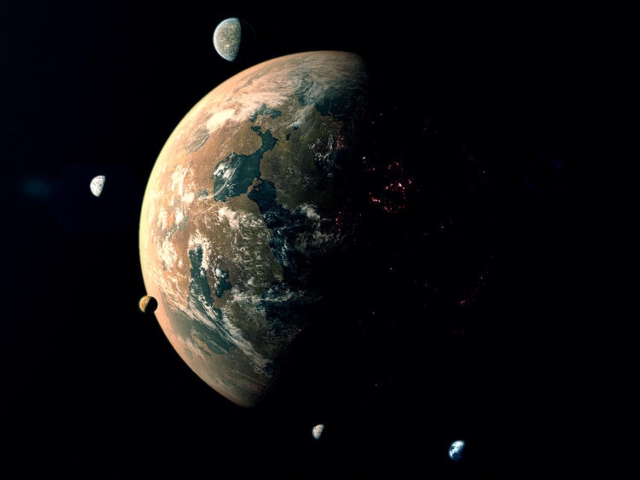[imagesource:deviantart]
Scientists say they have found new evidence that proves the existence of the fabled ‘Planet 9’ in our solar system.
For years now astronomers have been suggesting that unusual behaviour on the edge of our solar system is best explained by another, undiscovered planet.
The existence of this planet helps explain the orbits of objects that lie at the very far reaches of our solar system, more than 250 times away from the Sun than we are.
Konstantin Bogytin, an astronomer who helped popularise the theory, says that he and his team have found yet more evidence that suggests that the planet exists. The new work represents “the strongest statistical evidence yet that Planet 9 really is out there”, he said.
In the new work, scientists looked at a set of trans-Neptunian objects, or TNOs, which is the technical term for those objects that sit out at the edge of the solar system, beyond Neptune
The new work looked at those objects that have their movement made unstable because they interact with the orbit of Neptune. That instability meant they were harder to understand, so typically astronomers looking at a possible Planet Nine have avoided using them in their analysis.
Researchers instead looked towards those objects and tried to understand their movements. And, Dr Bogytin claimed, the best explanation is that they result from another, undiscovered planet.
The team carried out a host of simulations to understand how those objects’ orbits were affected by a variety of things, including the giant planets around them such as Neptune, the “Galactic tide” that comes from the Milky Way, and passing stars.
The best explanation was from the model that included Planet 9, however, Dr Bogytin said. They noted that there were other explanations for the behaviour of those objects – including the suggestion that other planets once influenced their orbit, but have since been removed – but claim that the theory of Planet 9 remains the best explanation.
A better understanding of the existence or not of Planet 9 will come when the Vera C Rubin Observatory is turned on, the authors note. The observatory is currently being built in Chile, and when it is turned on it will be able to scan the sky to understand the behaviour of those distant objects.
Planet Nine is theorised to have a mass about 10 times that of Earth and orbit about 20 times farther from the Sun on average than Neptune. It may take between 10,000 and 20,000 Earth years to make one full orbit around the Sun.
You may be tempted to ask how an entire planet could ‘hide’ in our solar system when we have zooming capabilities such as the new iPhone 15 has, but consider this: If Earth was the size of a marble, the edge of our solar system would be 11 kilometres away. That’s a lot of space to hide a planet.
[source:independent]





